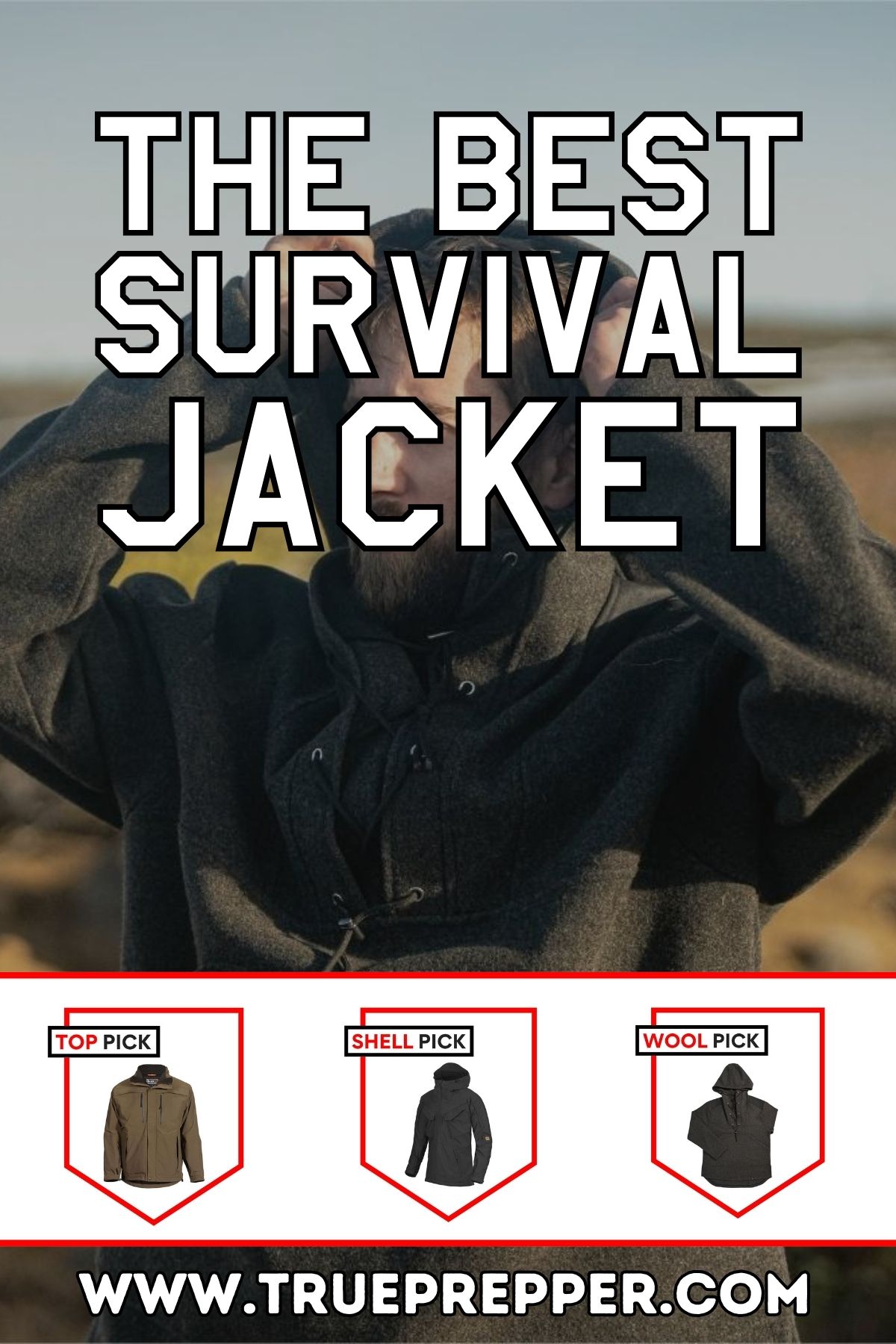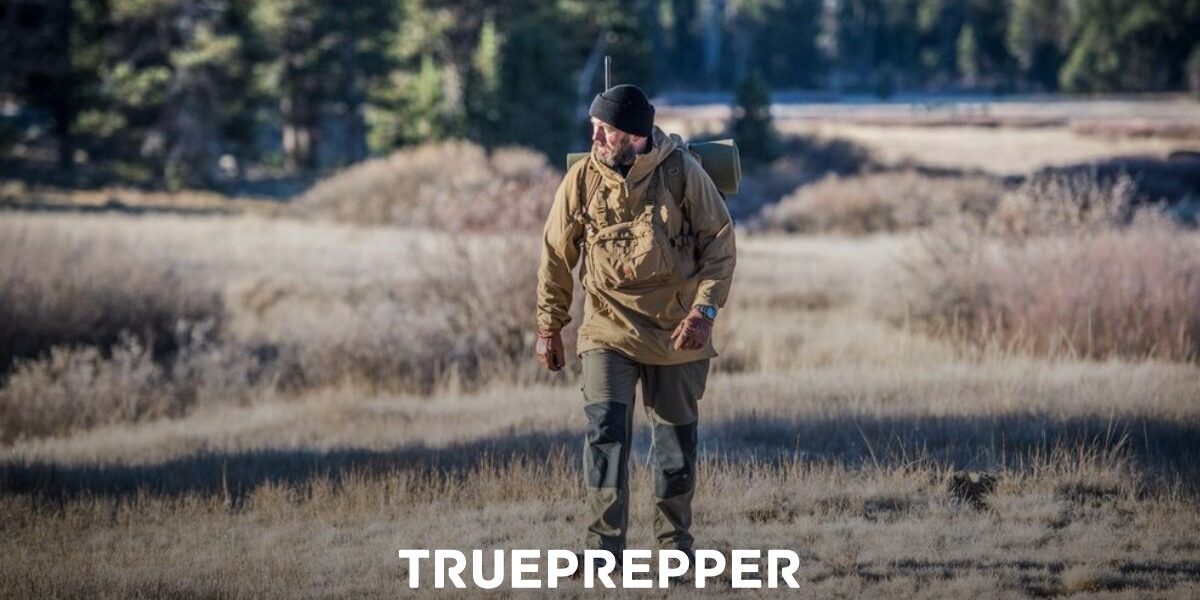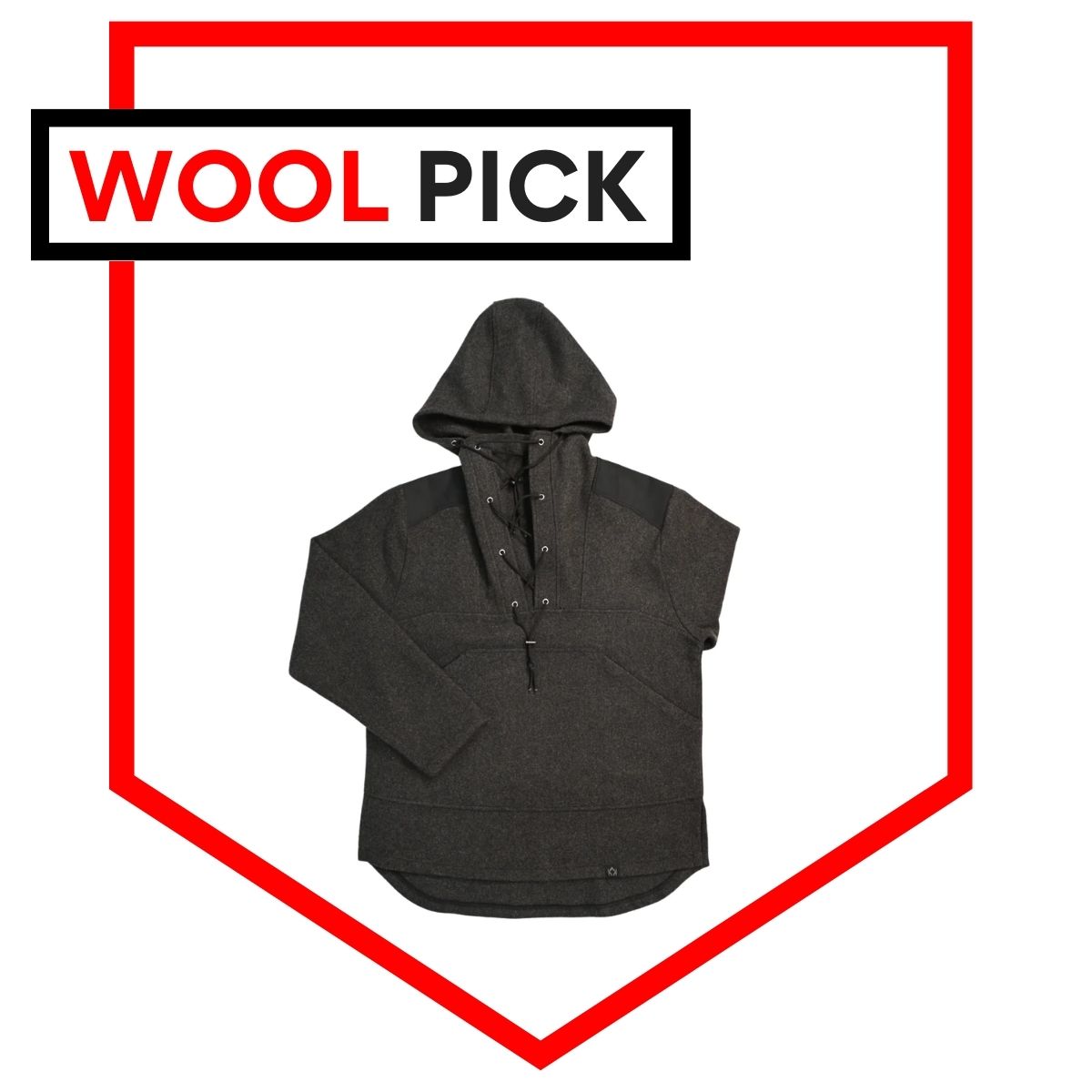Best Survival Jacket: Synthetic and Natural
Everyone can use a solid survival jacket, regardless of the material. Big-name hiking, camping, and backpacking brands have been paving the way for widespread survival appeal. This means you can find a solution for grey man urban survival or outdoor bushcraft survival easily, but there are plenty of brands and models to pick from.
This is where we come in. We’ve researched the best survival jackets, tested them, and now the results are in: the overall best, a shell option, and a wool option. If you need a jacket to have your back in any weather, one of our picks will keep you covered.
Contents (Jump to a Section)
The Best Survival Jacket
5.11 Bristol Parka
Grey Man, Versatile, and Durable
This shell/liner combo parka pairs extreme durability with smart functionality for a wide range of conditions.
*Price at time of publishing; check for price changes or sales.
The Bristol is the whole package and excels as a grey man jacket in urban areas. With easy access to your CCW, extremely durable nylon fabric, and multiple integrated layers- you can upgrade your everyday jacket in one fell swoop.
There are more features to this jacket than we can list out, but we can confidently say it’ll handle any survival situation and EDC loadout you have planned. While we’re big proponents of the grey man concept, we actually prefer the Tundra color as the Black can be a bit on the nose when it comes to looking like law enforcement.
Here is what you get with the Bristol:
- 4 color options, 8 sizes, regular & tall
- Nylon hardshell, breathable, waterproof, blood-borne pathogen-resistant
- 12 external pockets with plenty of internal stash pockets and pass-through access
- Quixip sidearm access, Aquaguard outer zippers
- 1.1 pounds
These are quality-made, effective, and lightweight- so it’s easy to see why the 5.11 Bristol Parka is the best.
Survival Jacket Shell
Helikon-Tex Pilgrim Anorak
Reliable, Durable, and Versatile
This shell staves off snagging branches along with any type of weather condition while still packing plenty of storage.
*Price at time of publishing; check for price changes or sales.
A treatable canvas material with plenty of pockets in a sharp-looking design turns out to be a home run for survival. The Pilgrim gets it done in the city or deep in the woods, providing great versatility and looking pretty good to boot. We didn’t really consider appearance in our comparisons, but it’s a nice bonus when your survival jacket isn’t an eyesore.
Once you wax this jacket up, it’ll handle anything you throw at it durability-wise. It works perfectly as a shell to layer outer shirts and baselayers under, making it part of an ideal survival ensemble.
Here is how this canvas anorak measures up:
- 3 color options, 7 sizes
- Polyester-lined DuraCanvas (weatherproof after being treated with wax)
- 1.9 pounds
If you need unmatched durability and plenty of pocket access in a mid-weight jacket, the Helikon-Tex Pilgrim Anorak Bushcraft Shell is what you need.
Wool Survival Jacket
Arcturus Wool Anorak
Natural, Comfortable, and Effective
The traditional survival anorak gets an upgrade in this wool jacket that wears better each and every time.
*Price at time of publishing; check for price changes or sales.
Not long ago, you had to order these hand-made at $500+ each. Thankfully, Arcturus has stepped up and developed a hefty 100% wool anorak that doesn’t break the bank. With over four pounds of wool on your back, you’ll repel water and retain heat.
It’s not your typical jacket- it will come oversized and the hood is oversized as well. This is designed for maneuverability and for wearing a hat. You’ll want to wear layers beneath this, and possibly pair it with a poncho if you expect very wet conditions. Not because this anorak won’t handle keeping you warm and dry, but because layering is always the best practice. Don’t wash it in a washing machine and let it break in to get more comfortable with every wear.
Here are the full specs:
- 5 sizes, all oversized
- 650 GSM thick 100% wool
- Reinforced shoulders
- Kangaroo pocket with divided storage
- 4 pounds
If you are looking for an Inuit survival anorak, you’ll want to pick up an Arcturus Wool Anorak.
Everything We Recommend
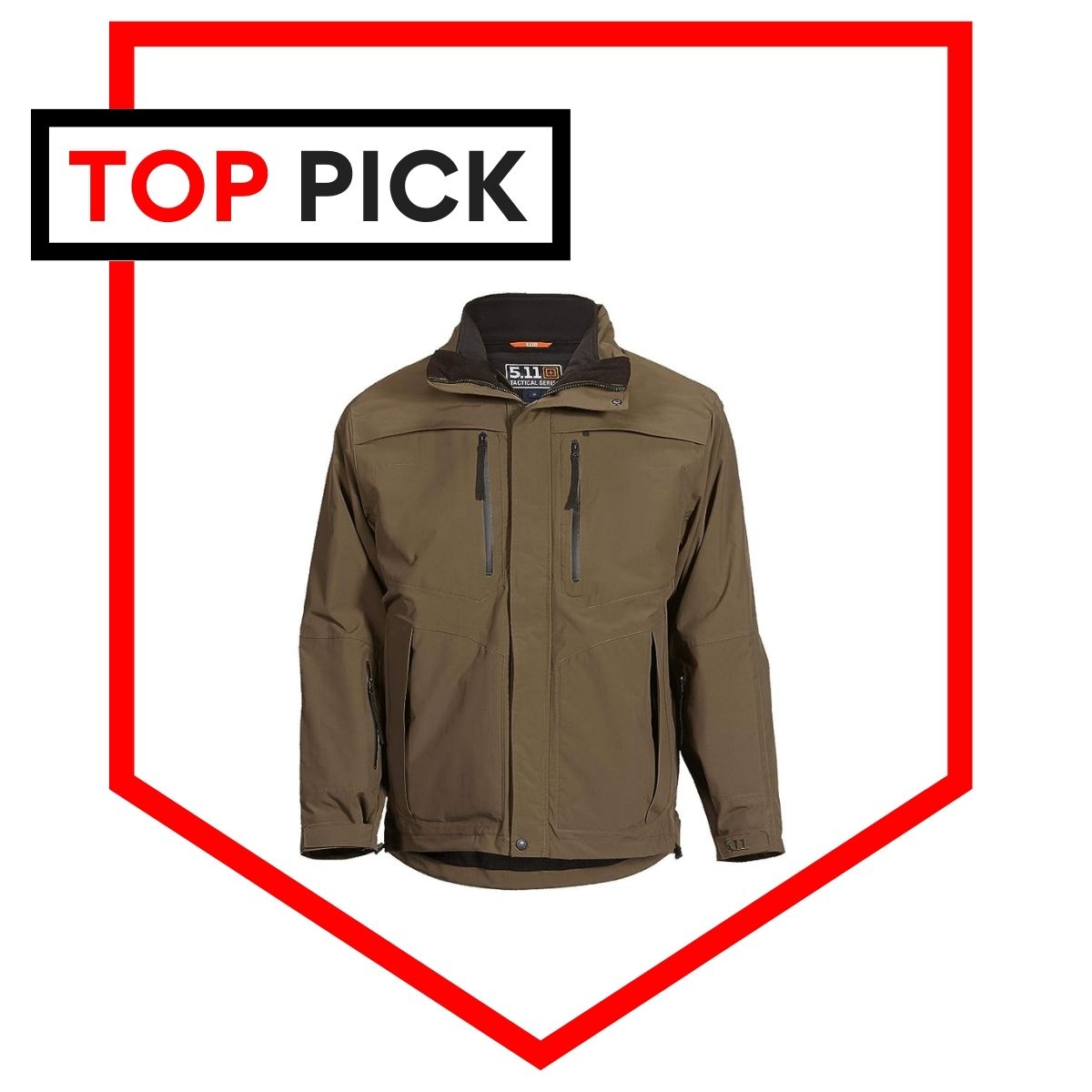
This shell/liner combo parka pairs extreme durability with smart functionality for a wide range of conditions.
Where to Buy
*at time of reviewing
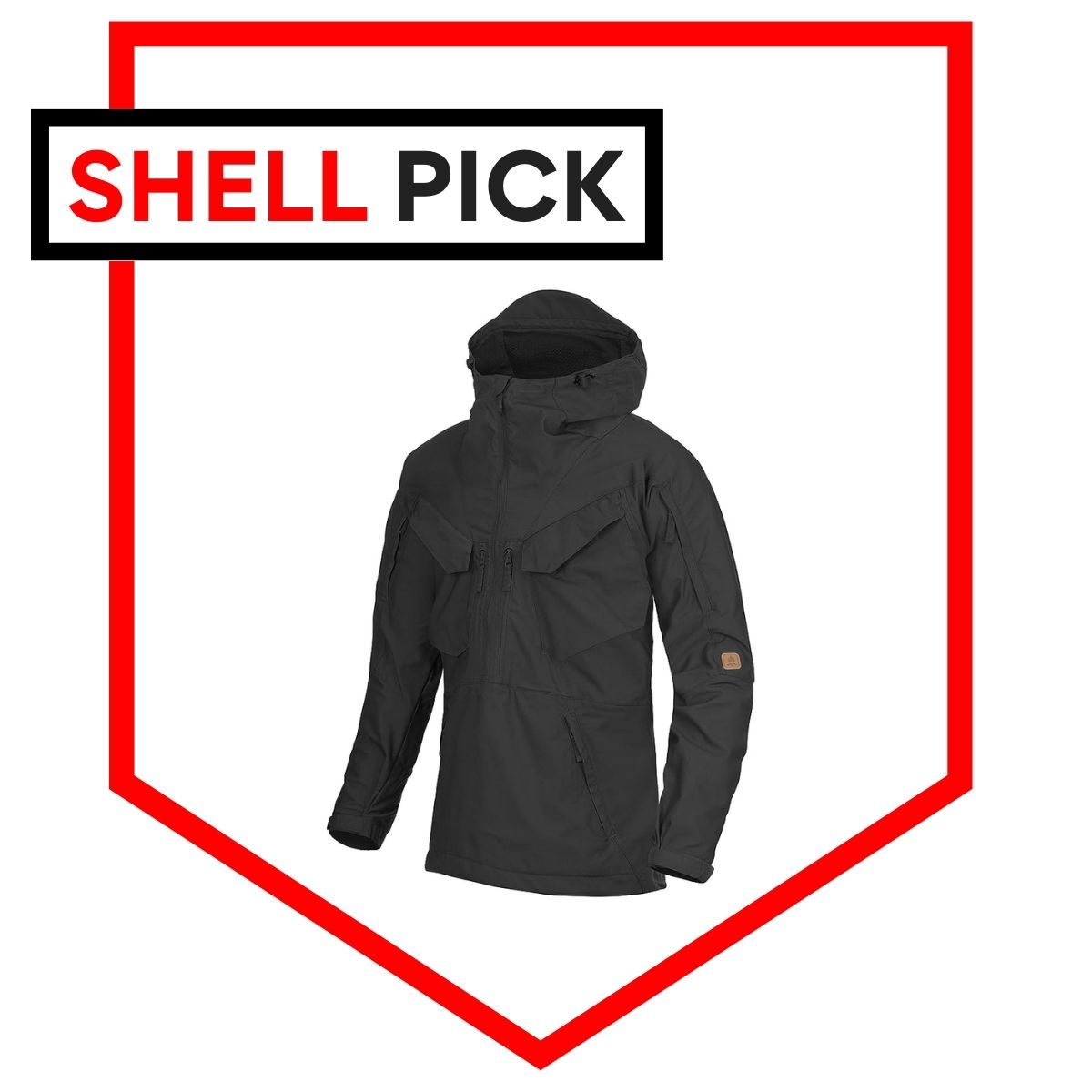
This shell staves off snagging branches along with any type of weather condition while still packing plenty of storage.
Where to Buy
*at time of reviewing
The Jackets We Compared
Our research narrowed the field down to several brands and types of jackets that we compared: Fjallraven, 5.11, Helikon-Tex, Arcturus, Columbia, Patagonia, North Face, TRU-SPEC, Kitanika, Sitka, Duluth, and more.
You can see our full list of review criteria below in the What to Look For section, with an explanation for each.
We considered a wide range of jackets but focused on versatility in a wide range of conditions. We did not consider ponchos, as we have a whole poncho roundup review dedicated to those. We also did not strictly focus on winter weather conditions, but instead a variety of conditions. At a later date, we may compare winter weather jackets with the primary focus being warmth.
We’re always looking for new and better solutions, so if you have a survival jacket that you swear by, let us know in the comments. We review most of our tested gear annually so we can try to get it in the next roundup round and see if it will beat out our top picks.
What to Look For
The best survival jackets have a few features to look for:
- Value
- Comfort
- Versatility
- Size & Weight
- Durability
When you get the right blend of these, you can find a jacket that will shelter you in a wide variety of conditions. Below, we break down what each of these features means for the coats that truly set themselves apart.
Value: Cost vs. Benefit
The amount of money you spend on something like a jacket shouldn’t blow out your entire budget. That said, it is a great place to invest given how much you could use it. Depending on where you live, a solid jacket could be a part of your everyday wardrobe (or at least during the winter months).
Still, you never want to spend too much money on one thing when it comes to survival gear. It’s better to diversify your equipment to make sure you are covered for a wide range of scenarios.
Comfort
It’s actually been studied by the US Military- clothing comfort affects performance. Soldiers often modify or skip uniform components that are uncomfortable, plus if they rate something less comfortable it affects their combat performance.
You want to be comfortable in a jacket you are designating for survival. You should want to get familiar with it and wear it often- not dread it. Certain materials and styles of jackets can be more comfortable, but often it falls to personal preference.
Versatility
Versatility, when it comes to jackets, is all about how the jacket can help you out in the widest range of situations and environments possible. You don’t always know how everything will play out, and you’ll want your jacket to be able to handle almost anything thrown at it.
That includes having pockets to store gear, being weatherproof and breathable, and not being too cumbersome to move in. Versatility is really what separates survival jackets from typical outdoor jackets.
Size & Weight
You don’t want a massive jacket that’ll weigh you down, but you also don’t want a thin emergency poncho type of jacket. We talk about it below, but natural materials can be bulky and heavy- so make sure you consider how your gear will perform if you’re moving long distances.
There is a sweet spot where you’ll find rugged durability with a not-to-high weight.
Durability
Durability is another feature that is paramount for survival. You don’t want to spend your days patching your jacket, although jackets that can be repaired are always a plus.
Heavyweight fabrics aren’t always the solution, as they can still have weaknesses, like flammability. When we look at survival jackets’ durability, we want them to be durable far past regular wear-and-tear: consider fire resistance, water resistance, puncture and tear resistance. Get a jacket that’s proven and you’ll be able to rely on it when times turn for the worst.
Synthetic vs. Natural Materials
Synthetic and natural materials both have their pros and cons. Manmade materials have come a long way over the years, with textile research giving us some excellent fabrics and fills for thermal insulation, waterproofness, breathability, and comfort. But natural materials have always been good at many of these, and are sustainable and easily repairable.
The best option for survival clothes, in our opinion, is both. Why segment off a type of textile for no reason? Pick what works for you depending on how you plan to use it.
Here are the benefits of each as we see it:
Natural Material Benefits
- Breathability: Natural materials like down and wool tend to be more breathable than synthetic materials. They allow moisture to escape, keeping you dry and comfortable.
- Warmth: Natural materials often provide excellent insulation and warmth, making them ideal for cold weather conditions.
- Durability: In some cases, natural materials can be more durable, especially when well-maintained. For example, high-quality wool jackets can last for many years.
- Biodegradable: Natural materials are biodegradable, which is more environmentally friendly compared to synthetic materials that can take a long time to decompose.
Synthetic Material Benefits
- Affordability: Synthetic jackets are often more budget-friendly than their natural counterparts.
- Lightweight: Synthetic materials can be engineered to be lighter weight, making synthetic jackets usually lighter.
- Hypoallergenic: Synthetic materials are less likely to cause allergies in comparison to natural materials.
- Water Resistance: Many synthetic jackets come with water-resistant or waterproof coatings, making them suitable for wet and rainy conditions.
- Low Maintenance: Synthetic jackets are generally easier to clean and maintain. They can often be machine-washed and dried.
- Quick Drying: Synthetic materials dry faster than natural materials, making them suitable for outdoor activities where staying dry is essential.
Darwin talks mostly about down vs. synthetic fill in this video (rather than fabric types), but it does show some comparisons we’ll be making when we get to our cold-weather jacket review:
Who Needs a Survival Jacket?
Everyone needs to own a jacket, and why not have it serve you for survival purposes as well? Most outdoor brand jackets (Columbia, North Face, Patagonia) will work and they are found everywhere. Workwear brands (Duluth, Carhartt, Whitetails) work as well. Just because they did not beat out the survival-specific models that tested as the best doesn’t mean you can’t use them for survival.
We consider a survival jacket essential for:
Because people live in different climate regions, we merely suggest a survival jacket for these kits:
One thing is for sure- you want either a jacket or a poncho in your survival kits to serve as your rain solution. While you may not need both, we’re big fans of the two is one and one is none mantra.
How We Review Products: We research thoroughly before selecting the best products to review. We have vast prepping and survival experience and bring in outside experts when needed. Hours on end are spent testing gear in stressful conditions and using specialized testing gear to verify claims. We assign performance criteria and impartially rate each tested item. Learn more about how we test.
Sources and References
All of our experience and the testing we do to determine the best survival jacket are useless without listing our research sources and references. We leaned on these for the book knowledge that we paired with our hands-on testing and practical survival experience:
Ashcroft, F. (2002). Life at the Extremes: The Science of Survival. University of California Press. Berkeley and Los Angeles, California. (Source)
Steinman, A., et al. (1986). Survival at Sea: The Effects of Protective Clothing and Survivor Location on Core and Skin Temperatures. Coast Guard Office of Research & Development. (Source)
Shanley, L. (1993). Military Protective Clothing: Implications for Clothing and Textiles Curriculum and Research. Clothing and Textiles Research Journal. Volume 11. Issue 3. Pages 55-59. (Source)
The Final Word
Survival jackets aren’t anything too special- they are just regular jackets that are fine-tuned to help you in a wide range of environments and situations. They accomplish this by focusing on versatility and durability. Most work great for everyday wear and are worth adding to your everyday routine.
Here are a few other guides and reviews our subscribers have found helpful:
- Best Survival Socks for Preppers and Survivalists
- Best Survival Gloves | Reviews & Buying Guide
- Everyday Carry List | 25 EDC Essentials
We presented quite a lot of information, but as always: if you have any questions let us know and we would be happy to help. Our research and testing found the 5.11 Bristol Parka to be the best option given its value, comfort, versatility, size/weight, and durability.
Keep exploring, stay prepared, and be safe.
You’ve Been Missing Out
Join the 2+ million preppers that rely on our prepping advice by subscribing to TruePrepper.- Practical guides and tips
- Useful survival giveaways
- Free, forever
- < 0.4% of people unsubscribe
